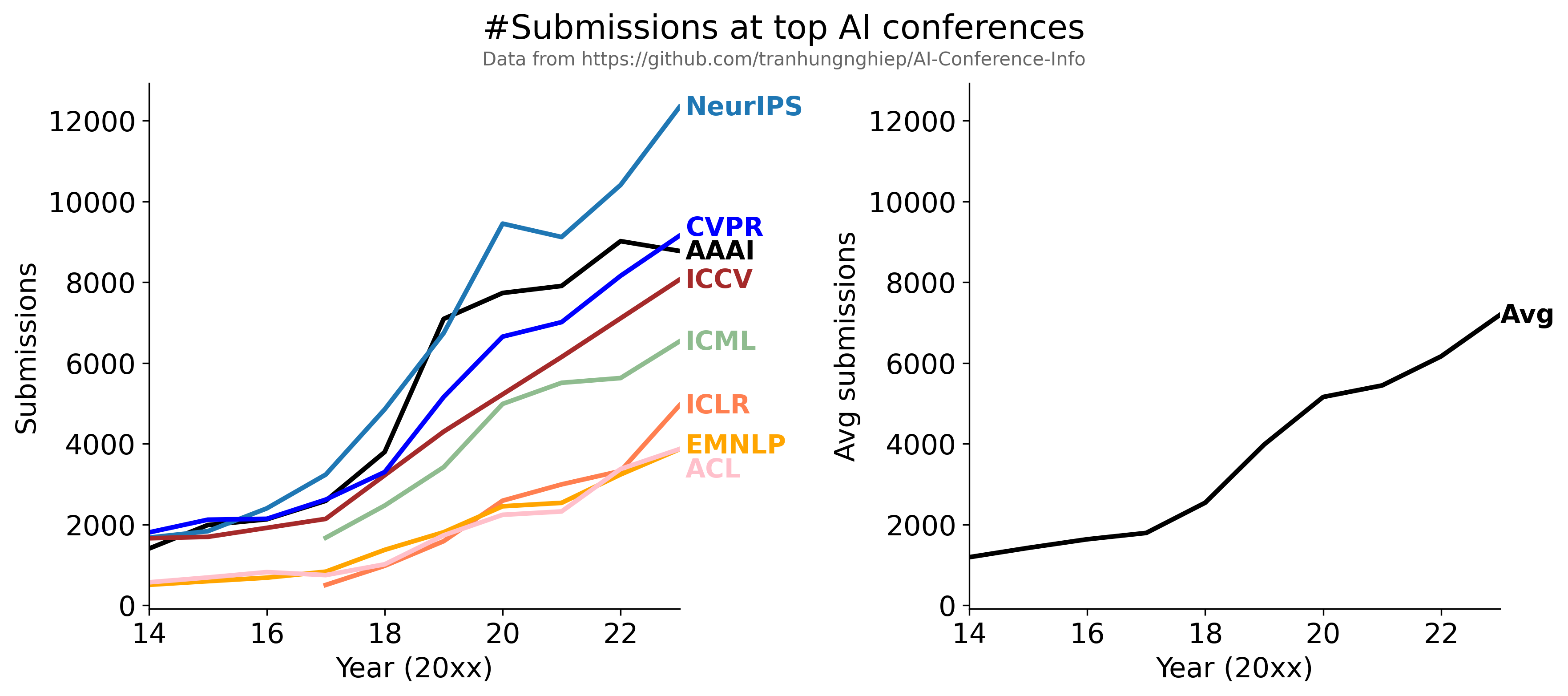
When will the average number of submissions to top AI conferences first decline over the previous year?
Plus
4
Ṁ47362036
6%
2024
49%
2025
6%
2026
6%
2027
6%
2028
6%
2029
6%
2030
6%
2031-2034
6%
>2034
6%
The number of submissions at top AI conferences like AAAI, NeurIPS, ICLR, ICML, ACL, EMNLP, ICCV and CVPR have been increasing pretty much monotonically since at least 2014. This market asks how long this trend will continue.

(plotting code adapted from https://github.com/lixin4ever/Conference-Acceptance-Rate)
When will be the first year that the average number of long paper, main conference submissions at AAAI, NeurIPS, ICLR, ICML, ACL, EMNLP, ICCV and CVPR actually declines relative to the previous year. To be clear, I mean the number of submissions, and not the number of acceptances.
This market fully resolves when this happens, or when publication statistics for all of these (extant) conferences for the year 2034 have come out.
This question is managed and resolved by Manifold.
Get 1,000and
1,000and 3.00
3.00
Related questions
Related questions
Will we have an AI generated research paper accepted to > 1 top ML conference by 2026?
40% chance
Will we have an AI generated research paper accepted to > 1 top ML conference by 2028?
69% chance
What will be the average P(doom) of AI researchers in 2025?
20% chance
Will we have an AI generated research paper accepted to > 1 top ML conference by 2027?
63% chance
Will we have an AI generated research paper accepted to > 1 top ML conference by 2025?
6% chance
Will there be a decline in software engineer salaries attributed to AI by the end of 2025?
36% chance
Will AI Impacts publish another Expert Survey on Progress in AI by the end of 2025?
96% chance
Will AI contribute as much as a co-author would today to a real research mathematics paper before Jan 1 2026?
30% chance
Will we have an AI generated research paper accepted to > 1 top ML conference by 2030?
83% chance
How much will Google Trends interest in AI consciousness change from Jan '24 to Jan '26?